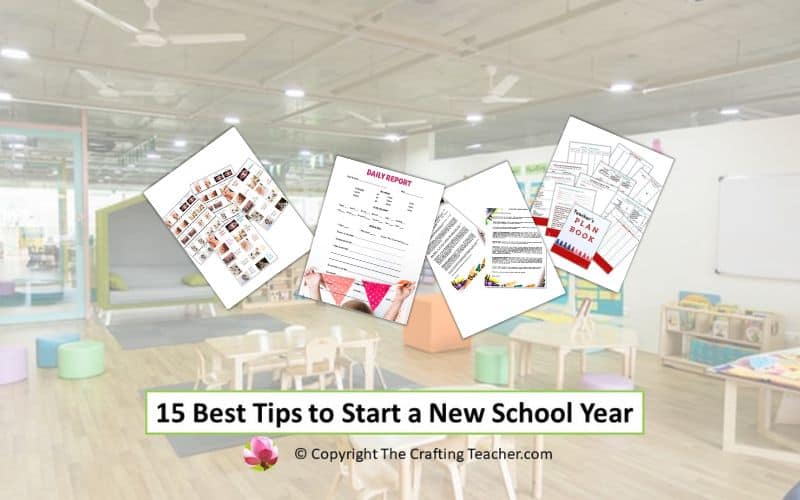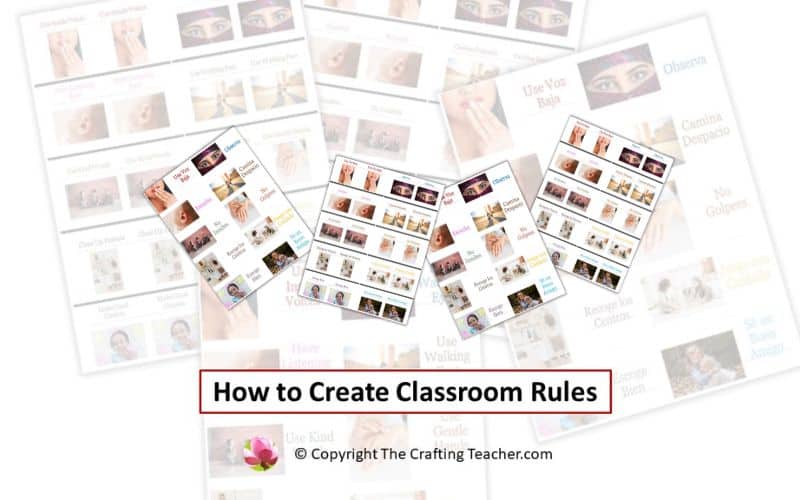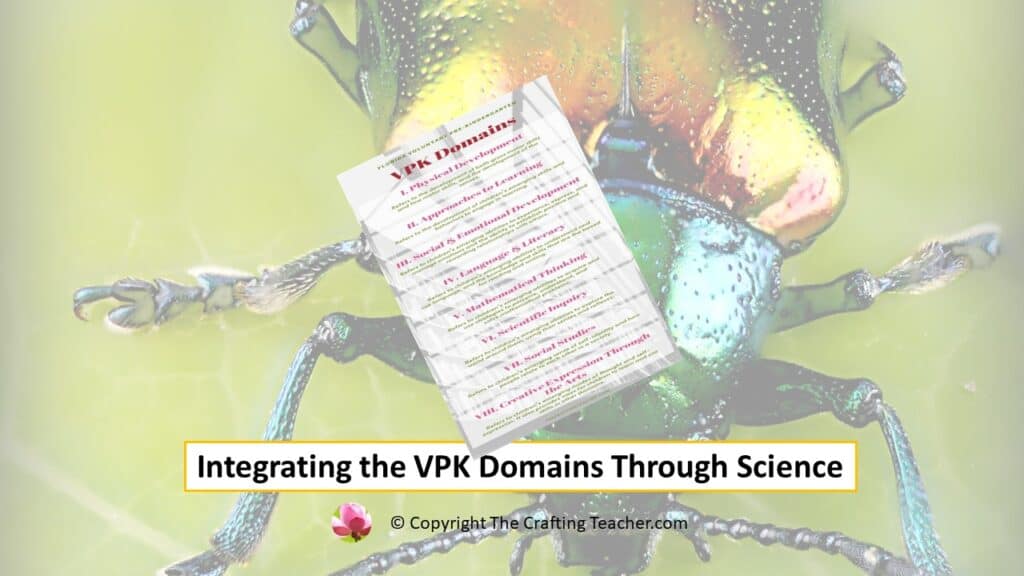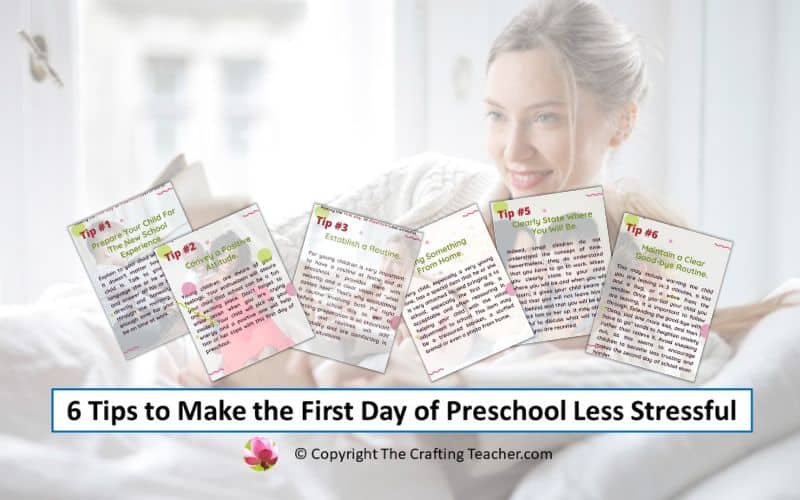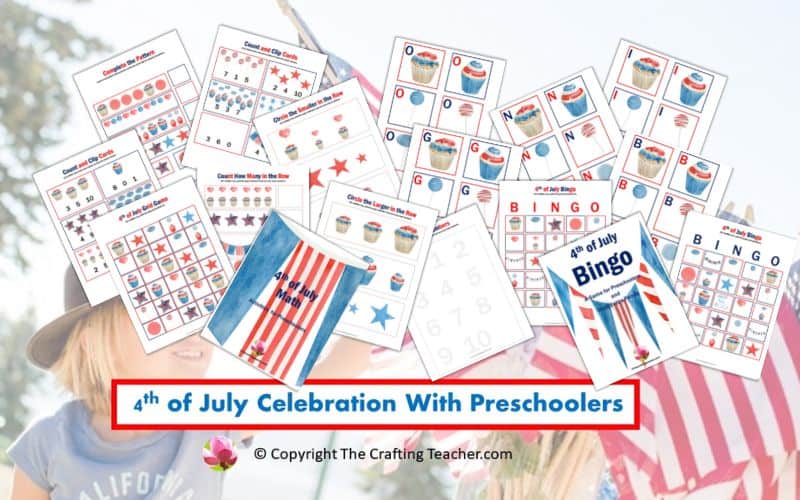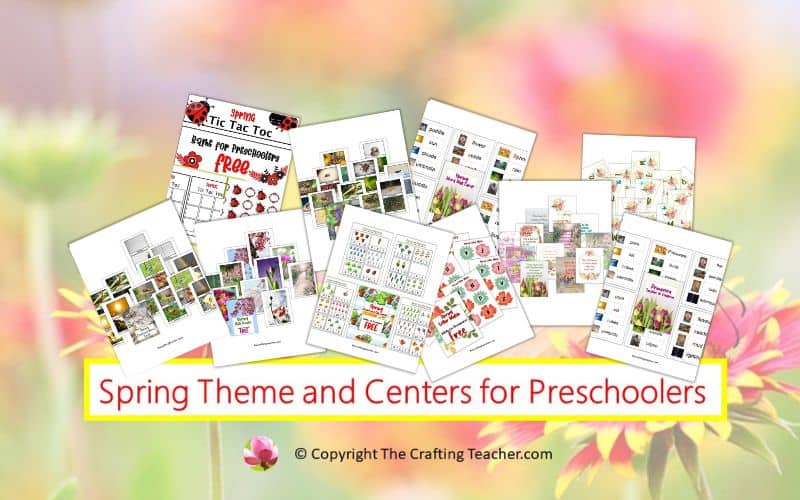Affiliate Disclosure: “This post contains affiliate links, which means I receive a small commission, at no extra cost to you, if you make a purchase using this link.”
15 Best Tips to Start a New Preschool Year
A Little Planning To Start on the Right Foot
You will soon start a new preschool year, full of unknown situations, and I wanted to help you start on the right foot with my best tips, hoping to make it easier for you, your preschoolers, and your parents.
This has been a crazy and scary year. The pandemic came to disrupt everything in our lives and changed the world forever.
It is my understanding that most preschool programs closed, either because somebody got sick or because they wanted to prevent it. Other centers, like the one I work at, stayed open because we mainly serve doctors and nurses.
I have to say that being so close to first responders and essential workers every day is very stressful, but my teachers have worked without complaints. I commend them and appreciate them for being so professional and dedicated. If you are one of those teachers, thank you!
How to Restart After the Pandemic
I know how hard it is to start a new preschool year after what we all have been through in the last months because we don’t know what is going to happen this year. However, we have to be ready regardless of this special situation.
One of the most important things to get ready for is planning your year before school begins. Starting on the right foot can make all the difference in how easy (or not) you are going to manage your class and can make a difference in how your experience and the experience of your students will be.
15 Best Tips to Get You Ready
Whether it is your first year of teaching, or you’ve been teaching for a while, these tips can help you start this new preschool year in the right direction, and make it better than the one before.
1. Get Prepared.
Give yourself enough time to review your students’ information, create labels for your centers, your preschoolers’ name cards, and tags for their cubbies. Take notes about what themes you are going to teach this year and in what order, what things you want to change in your classroom for this new preschool year, and what materials you need to replace or include.
2. Decorate Your Classroom
When I was still actively working as a teacher I was always decorating my classroom with a theme and changed it every year for a fresh start.
Whatever you decide, this is a new preschool year after a very difficult and complicated situation and you need to decorate your classroom in a manner that will catch the eyes of your preschoolers and their parents, and get them excited.
However, you need to remember not to cover all your walls. Leave a lot of room for your children’s work, which will always be the most important decoration you need to have.
Some things you can include are:
- Welcome banner
- Focus wall
- Calendar
- Weather station
- Classroom jobs chart
- Color poster
- Number poster
- Shape poster
- Alphabet tiles
- Birthday Board
- A daily schedule
- Word Wall could be a good idea as well.
3. Introduce Yourself.
One of the things I always do when I hire a new teacher is to ask her to type a little biography, provide a picture of herself, and type a simple letter for her parents, to introduce herself. Then I placed a little poster with her biography and her picture outside her classroom and gave out the introduction letter on the first day of school.
I encourage you to do this as well. You never know when a parent may find that he or she has something in common with you, and can start up a relationship that could be a positive partnership to develop a better learning experience for your preschoolers.
These letters might help you welcome your new preschoolers and their parents. There’s one copy in English and another one in Spanish, and they are FREE to use in your classroom.
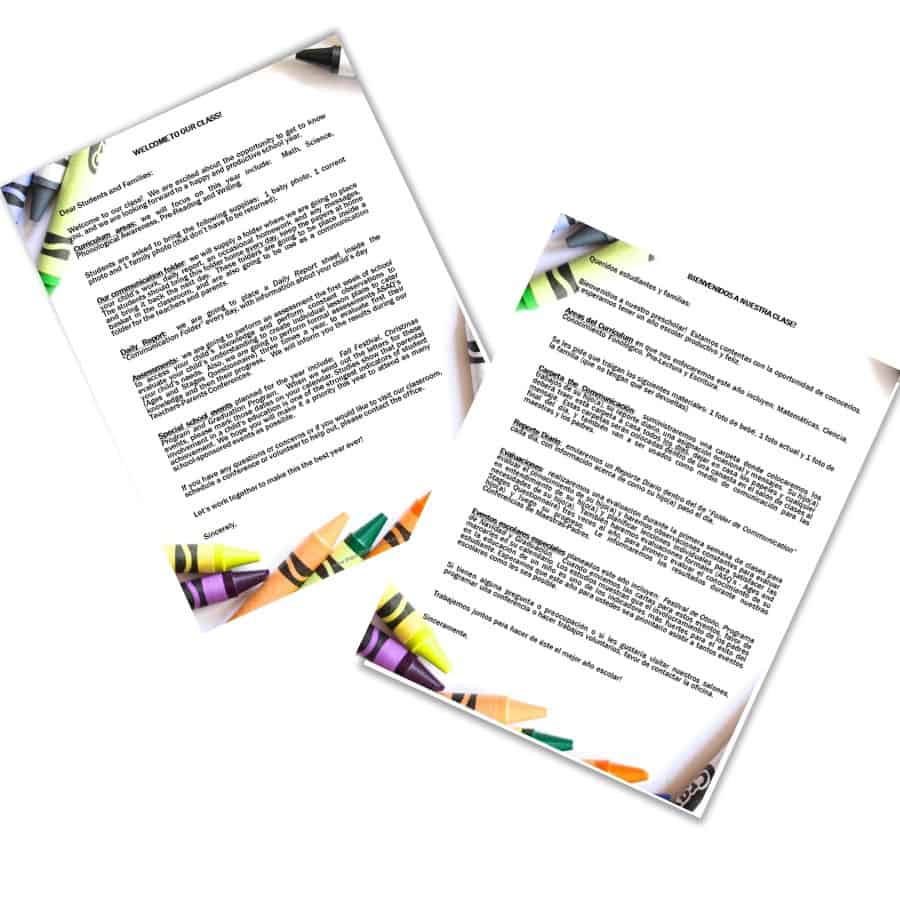
(English & Spanish)
4. Establish The Classroom Rules.
If you want discipline to work during this new preschool year, start by establishing classroom rules (no more than five) right at the beginning. To be more effective, it is recommended that you involve your students in the creation of the rules.
You can use circle time, for example, to talk to your preschoolers about the classroom rules, and involve them in the process of writing them. This way you will start building the foundation for your school family, which will promote your children to have a strong sense of classroom community and will support positive social behaviors.
To help you get started, receive these FREE rules posters for your preschool classroom. If you want them in Spanish please me know, and I will gladly send them to you as well.
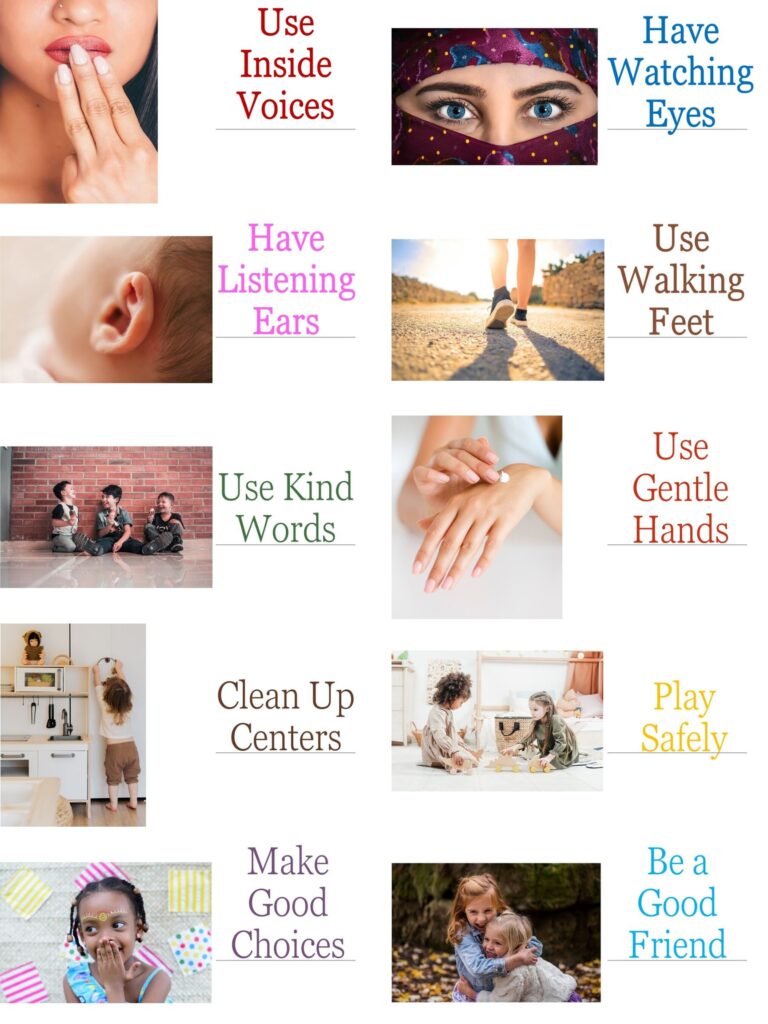
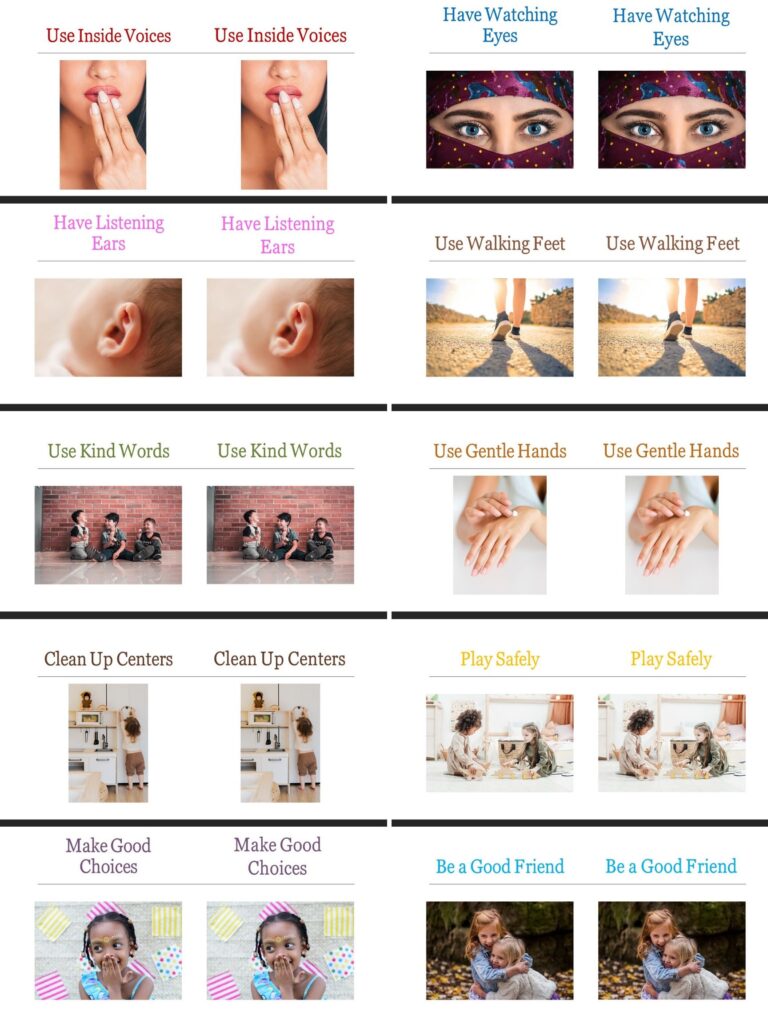
5. Get Organized.
I truly believe that nothing good happens in chaos, especially when you know that the first week (or weeks) in a new preschool classroom can get the best organizational systems off track.
Because of that, a preschool teacher (or any teacher for that matter) should start with the best organizational plan to get ready for her students.
You cannot expect your children to learn how to clean up and have a decent-looking classroom if you are not organized yourself. It will also keep your sanity intact!
Part of this organization process includes your classroom’s centers and shelves. There are all kinds of containers and labels you can use. These hacks might help you as well.
Organize your students’ information and evaluate your students to find what they know and what you think they need to know to create lesson plans based on that. Encourage curiosity in the classroom, and take time to start slowly in the beginning, so each student can find success.
To help you with this, please receive this FREE Plan Book as my gift to you. It is all you need to get all your information organized and in one place, for easy access.
6. Be Realistic.
You cannot expect your new preschool classroom to run as a classroom with older children might. Remember you are dealing with little kiddos that might not have been at school before.
I can almost guarantee that you will have some preschoolers who will be scared, some who will have challenging behaviors, some who will be shy, some outgoing, etc. Don’t let this stress you out.
Just make sure to have realistic goals and expectations and create an environment that will encourage your preschoolers to develop their creativity and curiosity, which will set the foundation for them to become lifelong learners.
7. Get Ready for Special Students.
You might receive students with special learning problems or physical disabilities.
Set up a plan from the beginning of this new preschool year to help these children the best way you can, without making them feel that you are setting them apart. This will allow you to cater to the best interests of the student, yourself, and the rest of the class.
8. Get Parents Involved From The Beginning.
Most preschool parents will be terrified about leaving their little treasures at school and out of their sight for the first time.
You will have to deal with a wide variety of parents types that will go from the very difficult ones that will try to make your life a living hell (literally!) to the ones that don’t care at all because you are “their babysitter” (super insulting!) and every other type in between.
Regardless, getting them involved and starting a partnership with them will go a long way to having a successful school year.
To accomplish this I always like to create a student’s communication folder or binder every new preschool year, where you can place things like daily reports, children’s work to take home, maybe a little homework, and a letter about the theme you are going to be talking about.
In other words, you can use it to send any communication that you want to make your parents aware of, and parents can also use the communication folder to write you a note back if they wish.
This Daily Report might help you. It’s simple, easy, and FREE.
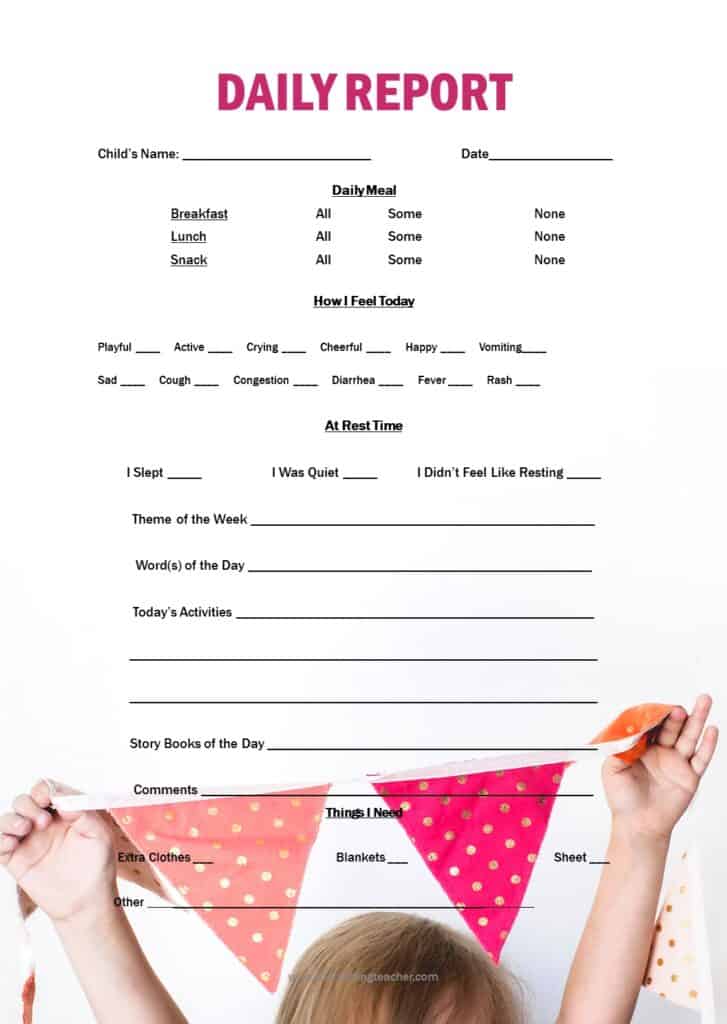
9. Plan Your Lessons.
One of the things you can do to get ready to receive your new batch of little beings is to develop a lesson plan so you know ahead of what is it that you are going to be doing.
Preschoolers notice more than sometimes we give them credit for, and they will test you, believe me! If you’re not ready for them, they will take advantage of it and you will lose them from the very beginning.
Your students must feel that you are prepared and know what you are doing, at all times, and if for whatever reason you feel lost or don’t know the answer to their questions, don’t panic, and most importantly, don’t let them know!
Simply keep your cool and answer them something like: “That’s a very interesting question. Why don’t we find out the answer together?” This is a trick that helps you more times than I can count!
10. Be Intentional in Approaching Your Students.
You might never find out what it’s happening in your preschoolers’ lives. Out of experience, I can tell you that some of them might have an amazing home life while others are leaving through things that not even an adult should live through.
From the very beginning of this new preschool year, make yourself and your classroom safe and positive heaven where you show your students that you truly care about them.
Always encourage their curiosity, make them feel welcome, and that they matter. This will promote a classroom community where unity, love, and respect for you as a person and as an educator and for each other as peers will cater every day.
11. Introduce Your Centers.
Show your children what each center in your classroom is about, how many children are allowed in each center, how to use the toys, and care for them.
Every new preschool year I like to open the centers slowly, maybe 2 or 3 a day during the first week, to avoid chaos, destruction, and injuries.
12. Create a Positive Atmosphere.
It is not difficult to start a new preschool year (even when you might be terrified), but it’s more difficult to keep being positive especially when you have children with behavior challenges. Believe me, I know!
To encourage yourself to keep doing it remember that preschoolers feed off your energy and your classroom’s atmosphere.
Keeping an environment where they feel comfortable, secure, and encouraged will not only have a positive influence on a child’s life (maybe the only one!) but it will also create an effective learning environment where students will be encouraged to do their best, which will have a positive impact for the rest of their lives.
13. Be Open and Sincere.
Talk to your children about what you want from them and how you feel. Don’t be afraid to be vulnerable because, for your preschoolers to learn how to express themselves and recognize their feelings and the feelings of others, you have to teach them how.
Also, make sure that you let them know early on exactly what you expect of them. I promise that most of your students will rise to your expectations.
Creating a classroom community that promotes love, respect, and empathy for themselves and each other will benefit everybody and will promote an integrated school family, which is a beautiful thing.
14. Give Personal Attention.
You must take a few minutes to interact with each of your children on a one-to-one level every day, to get to know them better, but most importantly, to assess what they know and what they need to know to plan individual activities accordingly.
Also always remember to greet every child (and parent) that comes through the door in the morning and say “goodbye” with a hug to each one as he or she leaves.
15. Adjust Accordingly.
If you have been teaching for a while you know that sometimes things don’t go the way you planned. Maybe one day your most challenging child doesn’t come and your day runs smoothly, or something happens that makes your day so difficult, that you come home drained, exhausted, or just sad.
Do not let these types of situations discourage you. You have one of the most beautiful and rewarding professions in the world. You hold in your hands the little treasures that will guide the future.
Always be flexible, and patient, and keep your sense of humor. You do this and you and your students will be okay.
The Last Thing You Need to Know
The beginning of this new preschool year is approaching fast and with preschoolers, it’s always changing, fast-paced, rewarding, emotional, and exciting but also exhausting and stressful. Nevertheless, always remember to allow yourself to have some personal time.
This may be going for a run after school, having bubble baths on the weekends, or simply putting work away for a while to spend some time with your family watching a movie or going out for ice cream.
You are more than just a teacher, and you need to make time for yourself to recharge your batteries and ensure you can be the best teacher possible for your preschoolers. Remember that for some of them, you might be the only positive in their lives.
Following all of these tips on how to start this new preschool year strong will help you have the best one yet.
You will create an amazing, loving, creative, and positive learning environment where your students will learn, enjoy and appreciate, and where you will be rewarded with a well-managed classroom where you will love to come every day and keep your sanity intact.
I promise that this amazing start to a new preschool year will only get better with each passing day.
Good luck! I hope you and your preschoolers have a wonderful year, full of wonders and rewards. I know it’s going to be amazing!
Be happy, safe, and creative. I wish you well.
Love,

P.D. Please let me know if you use some of the resources I provided and if they worked for you. Also, if you come up with other ideas let me know as well. I am very interested in what you have to say.

